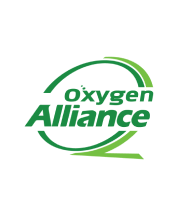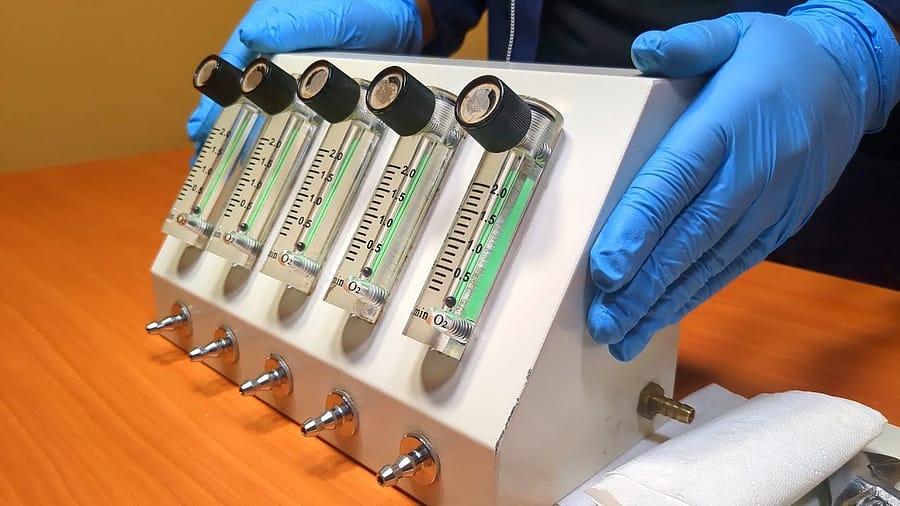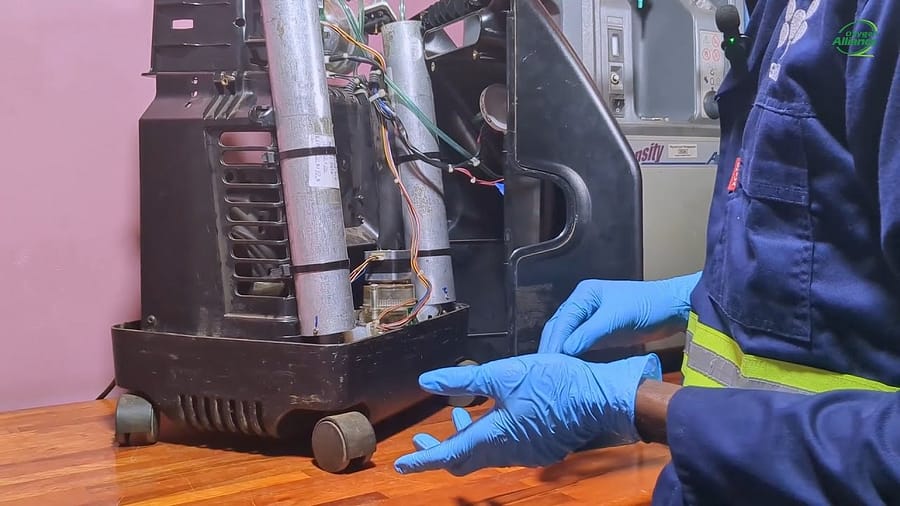System Purpose and Scope
In any surgical environment, the continuous availability of medical oxygen is fundamental. The Diamedica oxygen reservoir system is engineered to provide a robust backup solution for anesthesia machines, such as the Diamedica Glina, when the primary power source is unstable or fails completely. It acts as a crucial buffer, storing hours of life-sustaining oxygen to ensure patient care continues without interruption. This protocol details the system’s components, safety features, and operating procedures for biomedical professionals responsible for safeguarding the anesthetic environment.
System Components and Specifications
The system is composed of two primary units: the oxygen reservoir vessel and the air pump.
Oxygen Reservoir Vessel
- Construction: A sturdy, lightweight aluminum tank.
- Capacities: Available in 20-liter and 100-liter versions, which can supply an anesthesia machine for approximately two or eight hours, respectively.
- Fittings: Equipped with a pressure gauge, its own output flow meter, and a safety relief valve.
Air Pump Unit
- Function: This compact unit is designed to fill the reservoir.
- Compressor: The pump uses a 12V DC, oil-free, single-piston compressor to pressurize the oxygen.
- Power: The unit is battery-powered and can be charged from a main AC source.
- Cooling: Two integral fans keep components cool during operation.
System Safety Features
The pump’s pneumatic path and control systems are designed with multiple safety features critical for handling medical oxygen.
- Over-pressurization Protection: An integrated pressure switch automatically cuts power to the compressor once the reservoir reaches a pressure of 5 bars. The reservoir is also fitted with a separate safety relief valve set to 7 bars.
- Backflow Prevention: A one-way valve is installed in the pneumatic path to prevent backflow from the reservoir into the pump unit.
- Fire Mitigation: The path includes a fire break to mitigate the risk of oxygen piping fires.
- Flow Control: A needle valve allows for the regulation of flow.
Operating Procedure: Reservoir Filling
The filling process is straightforward and automated.
- Connect the output of one or more oxygen concentrators to the air pump’s designated inlet port.
- Activate the system. The pump will begin pressurizing the reservoir.
- The pump will run until the reservoir is filled to capacity, at which point the integrated pressure switch will automatically shut off the compressor.
- The reservoir is now fully charged and ready to act as an independent oxygen source.
Maintenance Overview
Mastering the service procedures for the air pump is essential for maintaining the system at peak readiness. A complete disassembly, as demonstrated in the video guide, involves disconnecting the battery and pneumatic tubings and removing the compressor itself for inspection or service. This intimate knowledge allows for precise troubleshooting and ensures every component is functioning correctly, guaranteeing this critical backup system will perform flawlessly when needed most.
Video Reference
A detailed video presentation is available to provide a comprehensive visual walkthrough of the entire system. It covers the function of every component, a full teardown of the air pump, and a step-by-step demonstration of the filling procedure.
Watch the full instructional video here:








